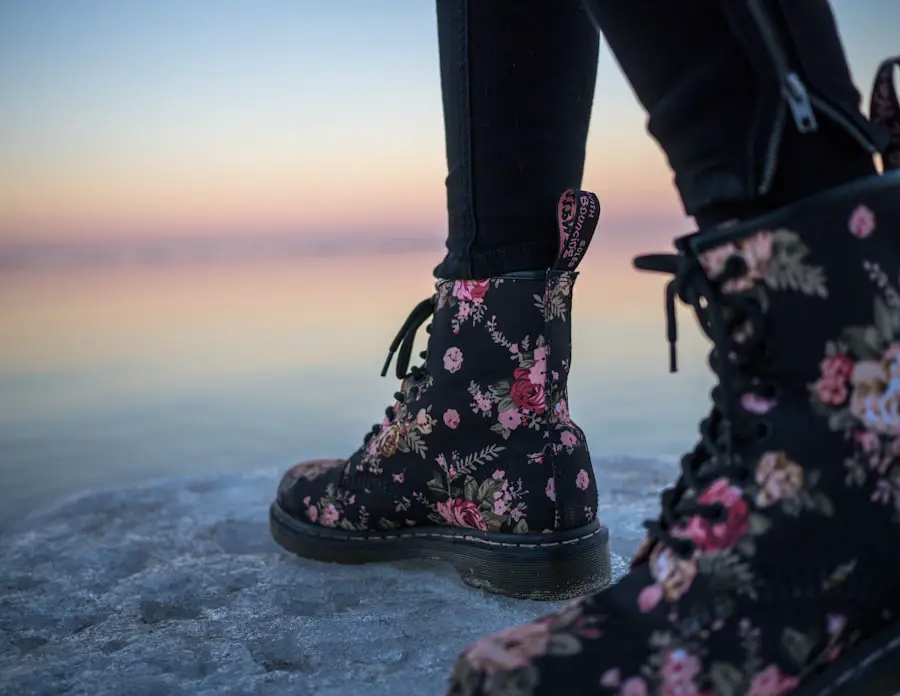“Do Princesses Wear Hiking Boots?” is a delightful children’s book authored by Carmela LaVigna Coyle, which presents a refreshing take on the traditional image of princesses. This book stands out in the realm of children’s literature by challenging the conventional notions of femininity and royalty. It invites young readers to envision princesses not just as figures adorned in gowns and tiaras, but as adventurous, active individuals who embrace the great outdoors.
The narrative is woven with playful rhymes and vibrant illustrations, capturing the imagination of children while simultaneously imparting valuable lessons about empowerment and self-discovery. The story follows a young girl who wonders about the attire of princesses, leading to a series of whimsical scenarios that depict these royal figures engaging in various outdoor activities. From hiking to climbing trees, the princesses in this book defy the stereotype of passivity often associated with their character.
Instead, they embody strength, curiosity, and a zest for life that resonates with modern values. This book serves as a catalyst for discussions about gender roles and the importance of encouraging children to pursue their interests, regardless of societal expectations.
Key Takeaways
- “Do Princesses Wear Hiking Boots?” challenges traditional princess stereotypes by promoting outdoor exploration and adventure.
- The book empowers young girls by promoting self-confidence and independence through its portrayal of princesses.
- It addresses gender stereotypes by showcasing princesses engaging in activities typically associated with boys, such as hiking and exploring.
- The importance of diverse role models for children is highlighted through the book’s portrayal of princesses from various backgrounds and interests.
- The impact of “Do Princesses Wear Hiking Boots?” on children’s literature is significant, as it encourages a more inclusive and empowering representation of princess culture.
The Empowerment of Princesses in Modern Society
In contemporary society, the concept of empowerment has taken on new dimensions, particularly concerning how young girls perceive themselves and their potential. “Do Princesses Wear Hiking Boots?” plays a pivotal role in this empowerment narrative by presenting princesses as multifaceted characters who are not confined to traditional roles. The book illustrates that being a princess does not solely mean wearing elegant dresses and attending royal balls; it also encompasses adventure, exploration, and resilience.
This portrayal encourages young girls to embrace their individuality and pursue their passions without fear of judgment. The empowerment theme is further emphasized through the actions of the princesses in the story. They are depicted engaging in activities that require physical strength and mental fortitude, such as hiking up mountains and exploring nature.
This representation sends a powerful message: girls can be both feminine and adventurous. By showcasing princesses who wear hiking boots instead of glass slippers, the book dismantles the notion that femininity is synonymous with fragility. It encourages girls to redefine what it means to be a princess in a way that aligns with their aspirations and interests.
Challenging Gender Stereotypes through Princess Literature

Children’s literature has long been a battleground for gender stereotypes, often reinforcing outdated notions of what boys and girls should aspire to be. “Do Princesses Wear Hiking Boots?” actively challenges these stereotypes by presenting a narrative that celebrates diversity in interests and abilities among girls. The book’s premise invites readers to question the traditional roles assigned to princesses and encourages them to envision a broader spectrum of possibilities.
By depicting princesses engaging in outdoor activities, the book confronts the stereotype that girls should be delicate and passive. Instead, it portrays them as adventurous and capable, capable of tackling challenges head-on. This shift in representation is crucial for young readers who are forming their identities.
When children see characters who defy conventional gender norms, they are more likely to feel empowered to pursue their own interests, whether they align with traditional gender roles or not. Moreover, the book serves as a conversation starter for parents and educators about the importance of exposing children to diverse narratives. By discussing the themes presented in “Do Princesses Wear Hiking Boots?”, adults can help children critically analyze the media they consume and understand the implications of gender representation.
This critical engagement fosters a more inclusive mindset that values individuality over conformity.
Encouraging Outdoor Exploration and Adventure
| Activity | Number of Participants | Duration |
|---|---|---|
| Hiking | 500 | 2 hours |
| Camping | 300 | 1-2 nights |
| Kayaking | 200 | 4 hours |
| Rock Climbing | 150 | 3 hours |
One of the most significant aspects of “Do Princesses Wear Hiking Boots?” is its emphasis on outdoor exploration and adventure. In an age where children are increasingly drawn to screens and sedentary activities, this book serves as an invitation to reconnect with nature. The narrative encourages young readers to step outside, explore their surroundings, and engage in physical activities that promote health and well-being.
The illustrations accompanying the text vividly depict various outdoor settings, from lush forests to rugged mountains, inspiring children to imagine themselves embarking on their own adventures. This visual representation not only captivates their attention but also instills a sense of wonder about the natural world. By portraying princesses who are unafraid to get dirty or take risks, the book reinforces the idea that exploration is an essential part of childhood development.
Furthermore, outdoor activities have been shown to have numerous benefits for children’s physical and mental health. Engaging with nature can enhance creativity, reduce stress, and improve overall well-being. “Do Princesses Wear Hiking Boots?” aligns with these findings by promoting an active lifestyle that encourages children to appreciate the beauty of the outdoors while developing essential life skills such as problem-solving and resilience.
Promoting Self-Confidence and Independence in Young Girls
Self-confidence is a crucial trait for children as they navigate their formative years. “Do Princesses Wear Hiking Boots?” plays an instrumental role in fostering self-confidence among young girls by presenting characters who embody strength and independence. The princesses in this narrative are not waiting for rescue; instead, they are actively pursuing their adventures, making decisions, and overcoming obstacles on their own terms.
This portrayal is particularly important in a society where girls often face pressure to conform to specific ideals of beauty and behavior. By showcasing princesses who are adventurous and self-reliant, the book sends a powerful message: girls can be strong leaders in their own lives. This representation encourages young readers to believe in their abilities and pursue their dreams without hesitation.
Moreover, the book’s emphasis on independence resonates with parents who wish to instill these values in their daughters. As children read about princesses who take charge of their destinies, they are inspired to cultivate their own sense of agency. This empowerment can lead to increased self-esteem and a willingness to take risks—qualities that will serve them well throughout their lives.
The Importance of Diverse Role Models for Children

Diversity in children’s literature is essential for fostering empathy and understanding among young readers. “Do Princesses Wear Hiking Boots?” contributes to this diversity by presenting princesses who break away from traditional molds. The characters in this book reflect a range of interests and personalities, demonstrating that there is no singular way to be a princess or a girl.
By introducing children to diverse role models, the book encourages them to appreciate differences and embrace individuality. This representation is particularly important for children from various backgrounds who may not see themselves reflected in mainstream narratives. When children encounter characters who share similar experiences or interests, it fosters a sense of belonging and validation.
Additionally, diverse role models can inspire children to pursue careers or hobbies they may not have considered otherwise. For instance, seeing a princess who enjoys hiking might encourage a child who loves nature but feels pressured to conform to more traditional interests. This broadening of horizons is vital for nurturing creativity and ambition among young readers.
Addressing Criticisms and Misconceptions about Princess Culture
While “Do Princesses Wear Hiking Boots?” offers a progressive take on princess culture, it is essential to address some criticisms associated with this genre. Critics often argue that princess narratives perpetuate unrealistic standards of beauty or reinforce materialistic values through depictions of lavish lifestyles. However, this book counters those arguments by focusing on character traits such as bravery, curiosity, and resilience rather than superficial attributes.
The narrative shifts the focus from external appearances to internal qualities that define true royalty. By emphasizing adventure over aesthetics, “Do Princesses Wear Hiking Boots?” reframes the conversation around what it means to be a princess in today’s world. It challenges readers to consider qualities like kindness, courage, and determination as essential components of leadership rather than mere physical beauty.
Moreover, this book opens up discussions about consumerism within children’s literature. While some princess stories may promote materialistic values through extravagant settings or possessions, “Do Princesses Wear Hiking Boots?” prioritizes experiences over things. It encourages children to find joy in exploration rather than material wealth, fostering a more meaningful understanding of happiness.
The Impact of “Do Princesses Wear Hiking Boots?” on Children’s Literature
“Do Princesses Wear Hiking Boots?” represents a significant shift in children’s literature by redefining what it means to be a princess in modern society. Through its empowering narrative and diverse representation, it challenges traditional gender stereotypes while promoting self-confidence and independence among young girls. The book serves as an invitation for children to explore the outdoors and embrace adventure while fostering critical discussions about gender roles.
As children’s literature continues to evolve, works like “Do Princesses Wear Hiking Boots?” play an essential role in shaping young minds. By providing relatable characters who defy conventions, it inspires children to envision themselves as active participants in their own stories rather than passive observers. Ultimately, this book contributes positively to the landscape of children’s literature by encouraging inclusivity, empowerment, and exploration—values that resonate deeply with today’s generation of readers.
If you’re wondering if princesses can wear hiking boots, you may also be interested in learning about the best time to travel to Germany. Germany is a beautiful country with diverse landscapes perfect for hiking, so knowing the best time to visit can enhance your outdoor experience. Check out this article for a seasonal guide on the best time to travel to Germany: Best Time to Travel to Germany: A Seasonal Guide.
FAQs
What are hiking boots?
Hiking boots are a type of footwear designed for outdoor activities such as hiking, trekking, and mountaineering. They are specifically designed to provide support, stability, and protection for the feet and ankles during outdoor adventures.
Do princesses wear hiking boots?
Yes, anyone, including princesses, can wear hiking boots if they are interested in outdoor activities such as hiking. Hiking boots are designed to be functional and practical for outdoor adventures, regardless of one’s title or status.
What are the benefits of wearing hiking boots?
Hiking boots provide several benefits, including ankle support, protection from rough terrain, stability on uneven surfaces, and waterproofing. They are also designed to provide traction and grip, making them suitable for various outdoor conditions.
Can hiking boots be stylish?
While hiking boots are primarily designed for functionality and performance, there are stylish options available on the market. Many outdoor and footwear brands offer hiking boots in a variety of designs and colors, allowing individuals to find a pair that suits their personal style.
Are there specific hiking boots designed for women?
Yes, there are hiking boots specifically designed for women, taking into account differences in foot shape and size. These boots are tailored to provide a comfortable and supportive fit for female hikers and outdoor enthusiasts.
